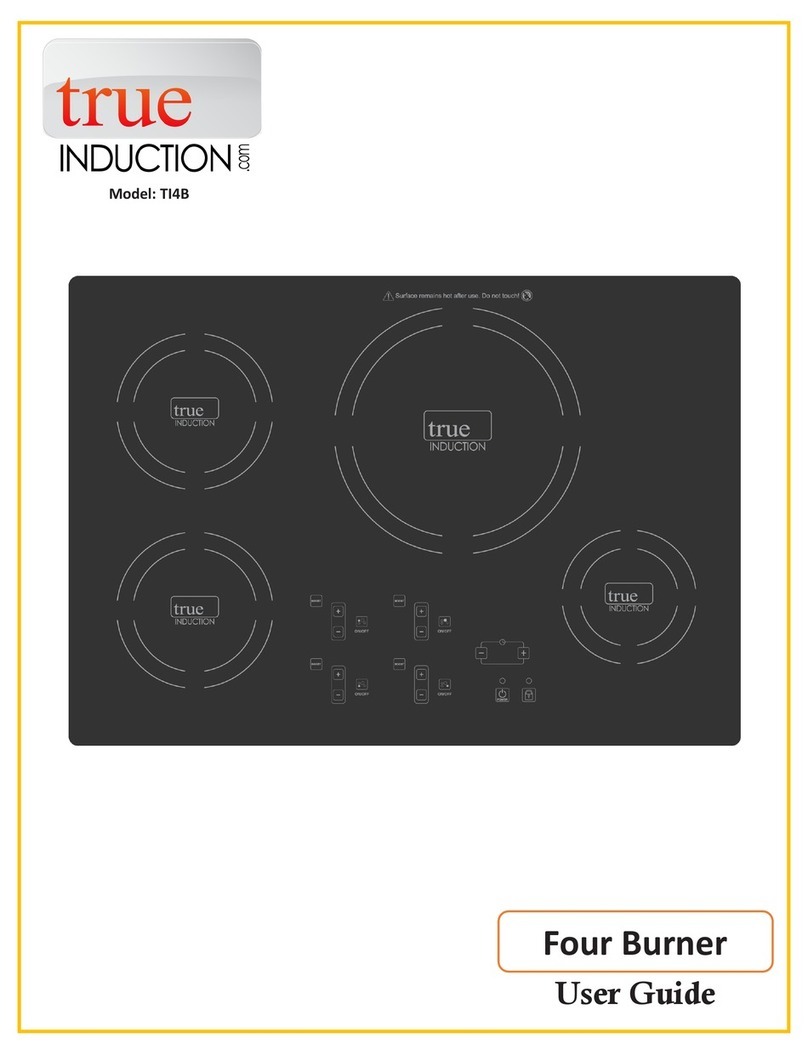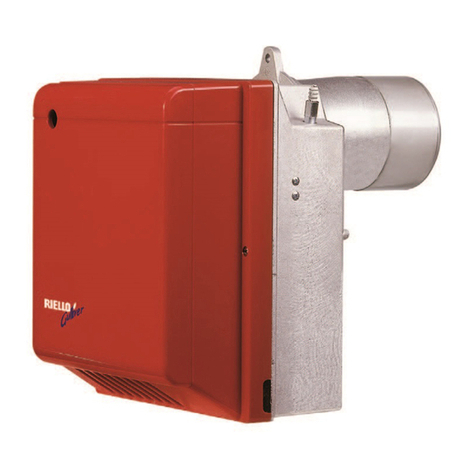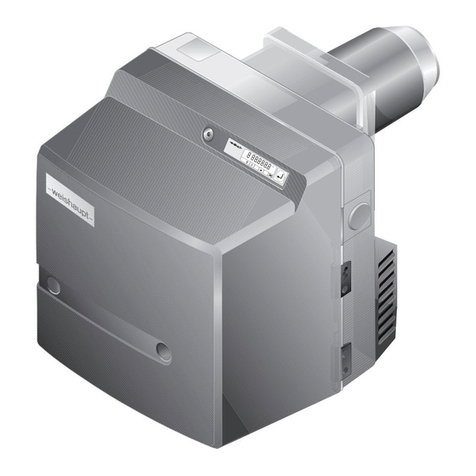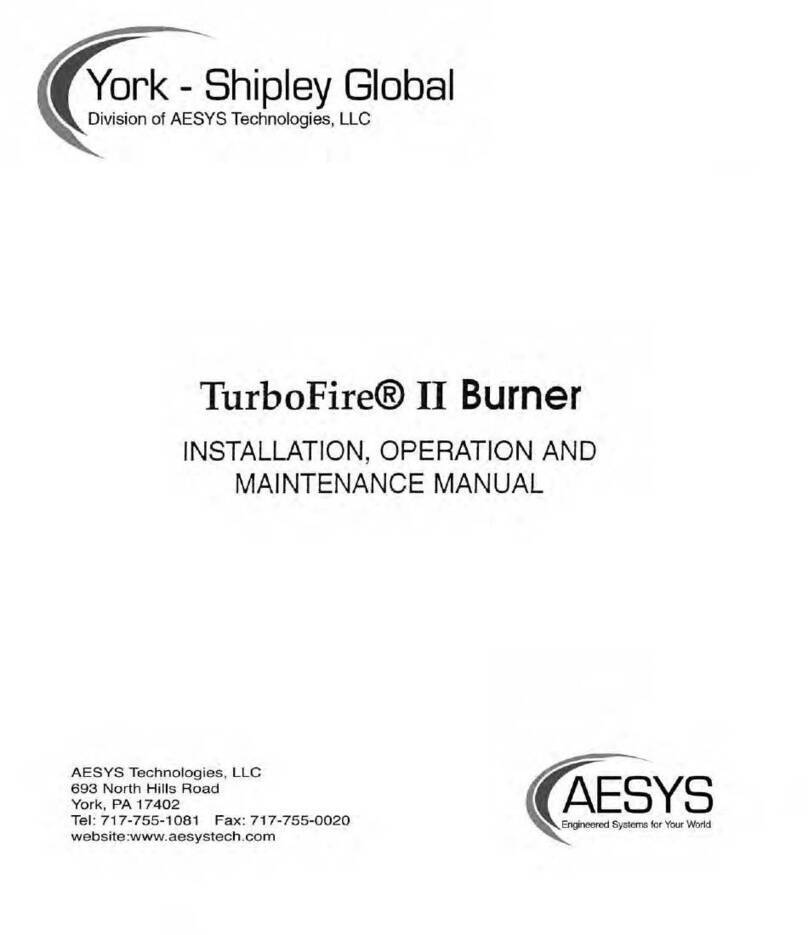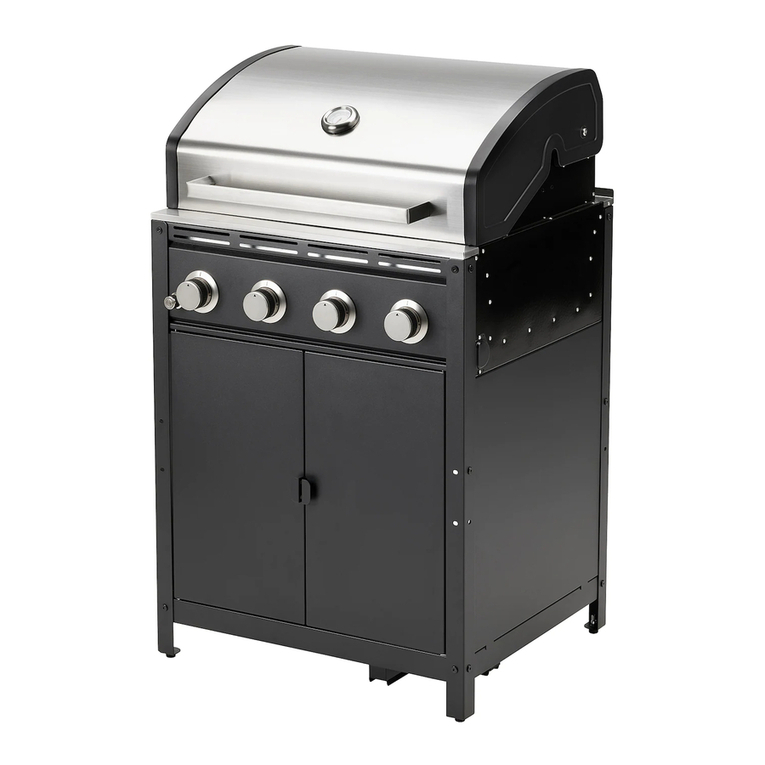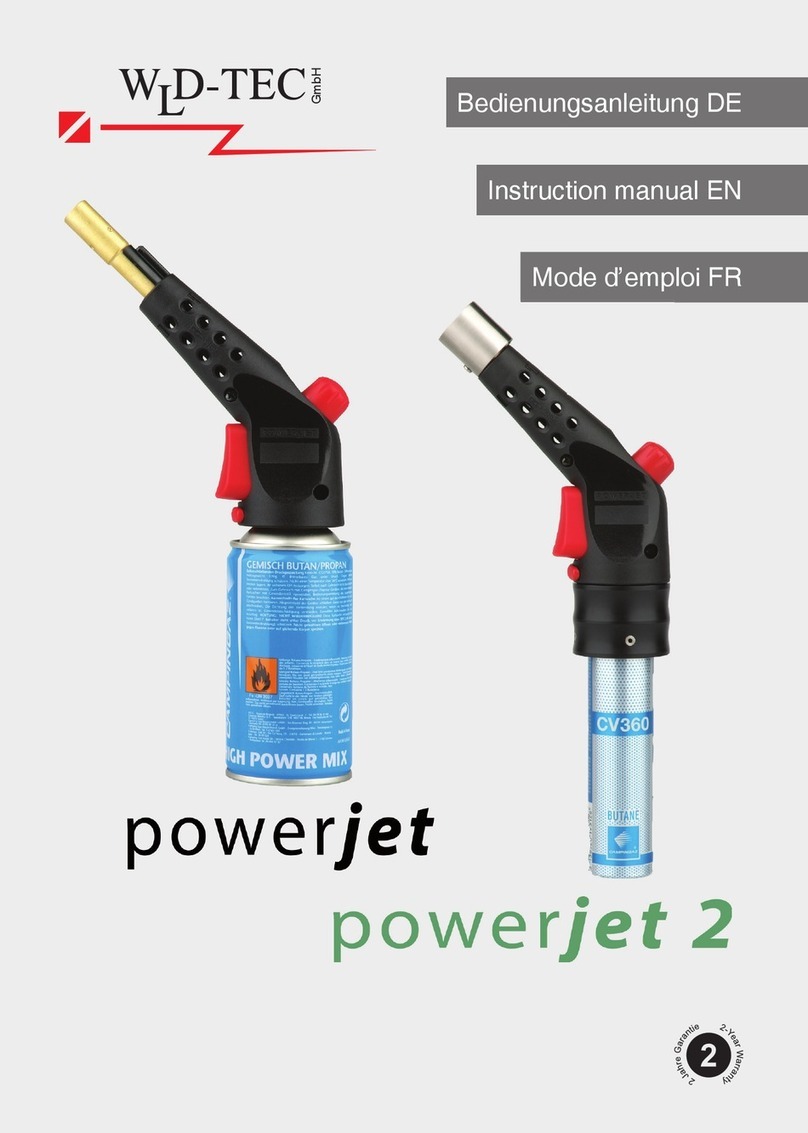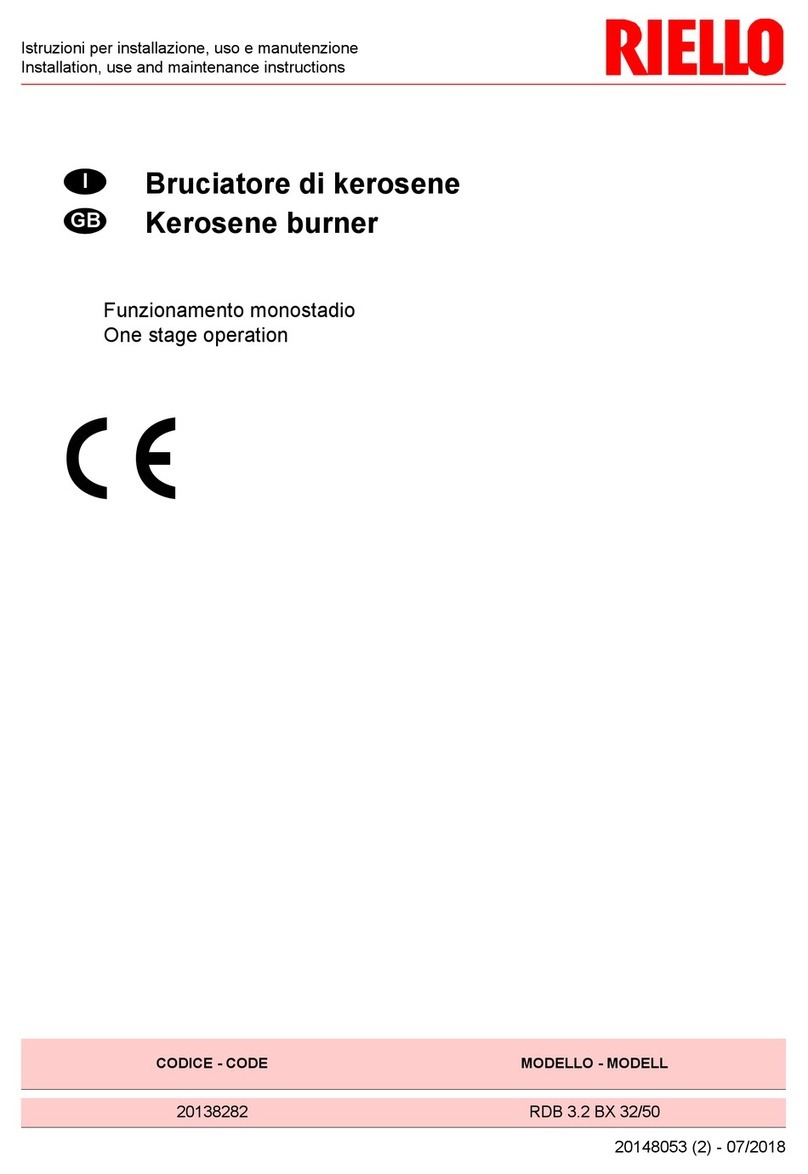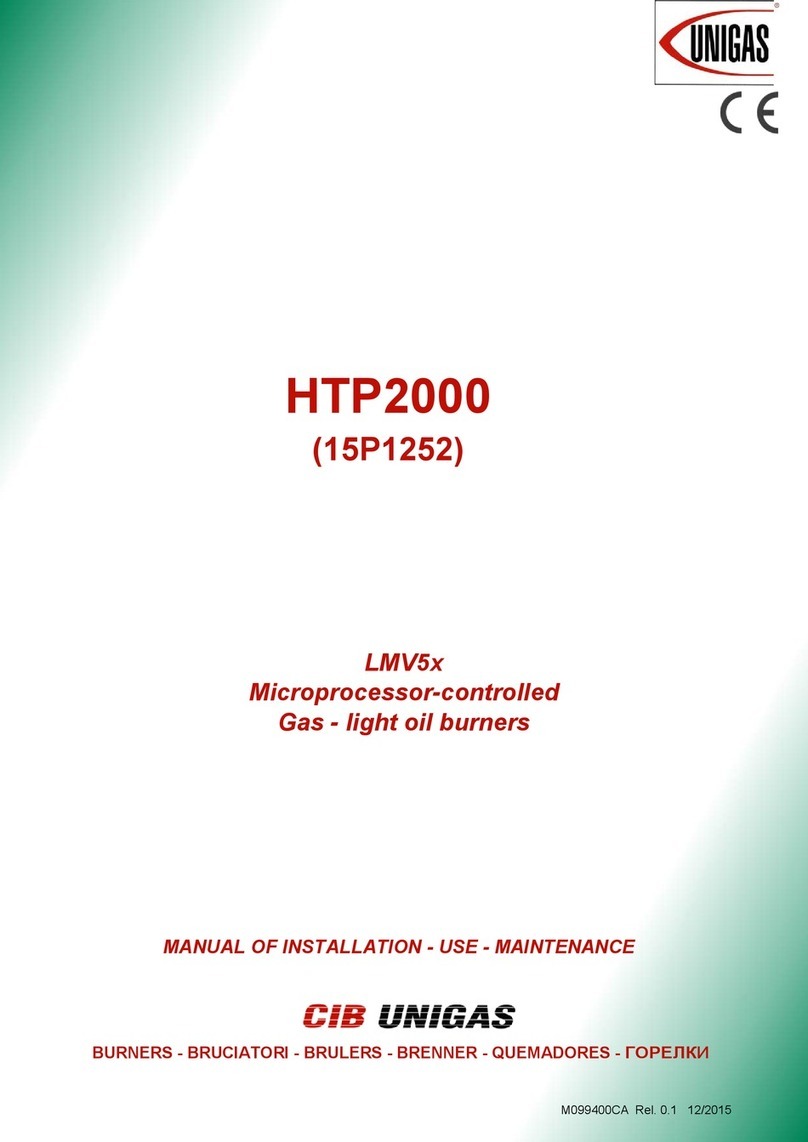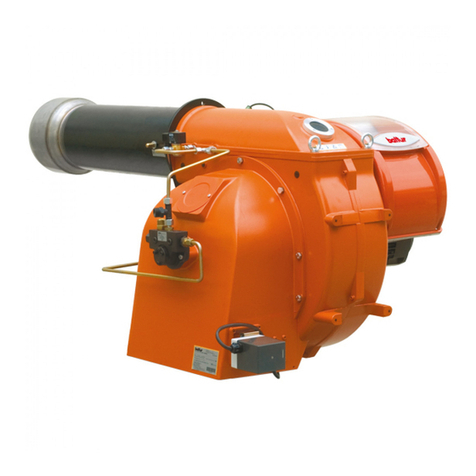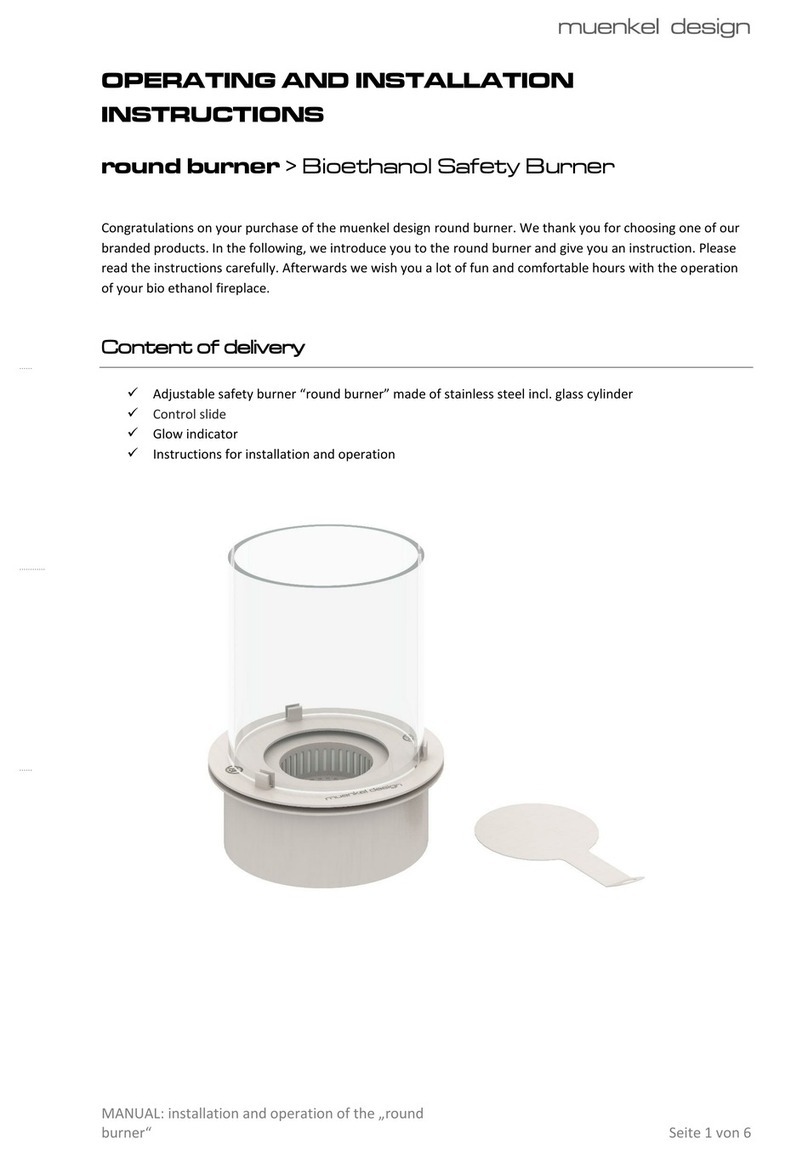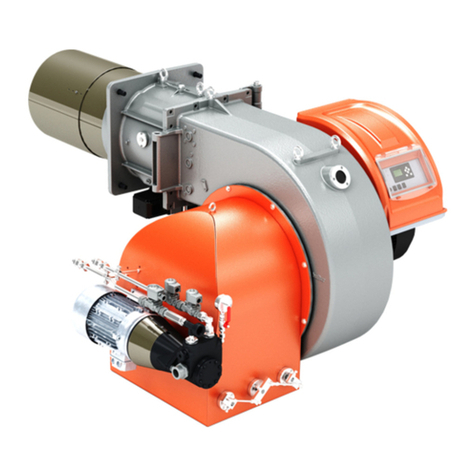
1
GSC International
Phone: 417.374.7431
Fax: 417.374.7442
Toll Free: 888.756.4592
service@gosciencecrazy.com
2076 James River Court
Nixa, Missouri 65714
Introduction
The ability to control and direct heat in the lab is essential to many
experiments. Many lab burners are tethered to large fuel tanks and
lack mobility. Your Butane Burner, however, is a small, portable unit
that carries its own rellable fuel tank in its tip-resistant base. It is
built with a simple on/off trigger ignition design and can create an
adjustable ame with an approximate maximum temperature of 1 300°
C (2450° F) that will burn between 40 and 60 minutes on a single tank
of butane.
How to Use
Familiarize yourself with the following instructions to ensure safe use of your Butane Burner:
Fueling
1. Locate a quality ltered butane fuel and move to a well-ventilated area. (Note: Never ll near an open ame.)
2. Make sure that your gas knob is in the OFF position, and ip you burner upside down. (Note: Be careful to not
touch or damage your ame head or ignition pin.)
3. Insert the tip of your butane canister into the ller valve on the bottom of your burner. Back spray of liquid
fuel from your valve will indicate that your tank is now full. Do not over ll.
4. Wait 5 minutes for your gas to stablize before igniting.
Igniting, Adjusting, and Turning Off the Flame
1. Place your burner on a level surface.
2. Turn your gas knob counter-clockwise until you hear a
soft “hissing” noise.
3. Press the red button on your knob to ignite the ame.
4. Adjust your ame’s intensity by turning your gas knob
counter-clockwise. Low to medium gas ow is ideal.
(Note: Your ame should burn blue. A red ame
indicates that you are low on fuel and need to rell.)
5. Turn your gas knob clockwise until it is in the OFF
position to extinguish your ame.
6. Allow your unit to cool before you store it or leave it
unattended.
Butane Burner
#BTN-01
Warning:
•Not a toy; use only
in a laboratory or
educational setting.
•California Proposition 65
Warning: This product can expose you to chemicals
including nickel and lead, which are known to
the State of California to cause cancer, birth
defects, or other reproductive harm. For more
information go to www.P65Warnings.ca.gov.


